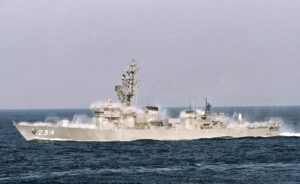In view of the Chinese navy's unabated harassment of Philippine units in the South China Sea, Japan has agreed to make its six Abukuma frigates (109 metres, 2,500 tonnes) available to the island state after their imminent decommissioning.

Although these ships have over thirty years of seagoing service under their keels, they would be a class of ship that the Philippine Navy has not had at its disposal for a long time, but which should give it a completely different weight in the region - because these ships would come to Manila with their armaments such as Harpoon, ASROC and torpedoes. A number of TC-90s (Beechcraft King Air) are also to be supplied as training and patrol aircraft. The project is in its initial stages and will not result in material handovers before 2027. Taking into account the Reciprocal Access Agreement (RAA - cooperation in defence and security matters, so far only with Australia and the UK, in future also with France) entered into by Japan with an Asian country for the first time last year, there are signs of an urgently needed coalescence of the First Island Chain as a counter-reaction to Chinese great power claims in the South China Sea.

In an effort to support the Philippines in its legitimate claim to parts of the Spratly Islands, the USA has now committed to developing both the Naval Detachment Oyster Bay and the rudimentary harbour facilities of the city of Quezon on the north coast of the elongated western island of Palawan as logistics and repair bases. These sites are located at a distance of around 100 nautical miles directly opposite the reef areas claimed, occupied and developed by China - contrary to the decision made by the Court of Arbitration in The Hague in 2016. Boats and ships of the Philippine Navy on supply or patrol missions, which are often under extreme pressure from the Chinese coastguard and usually damaged in the process, currently have to cover three times the distance before they can rely on technical support on the main island. It takes a lot of effort to maintain a presence in this sea area - and China is building on this with its aggressive behaviour.








